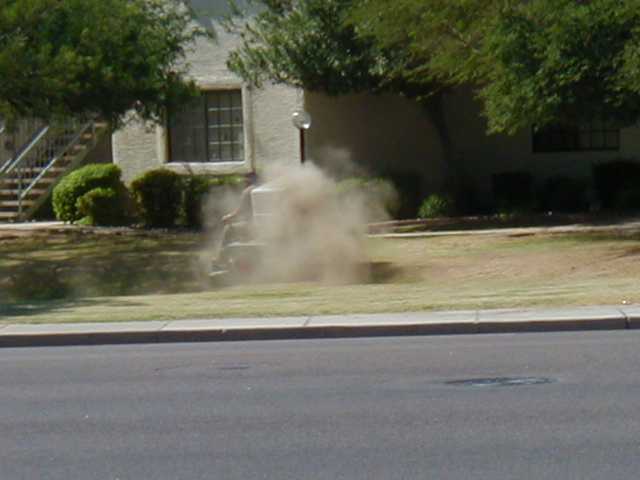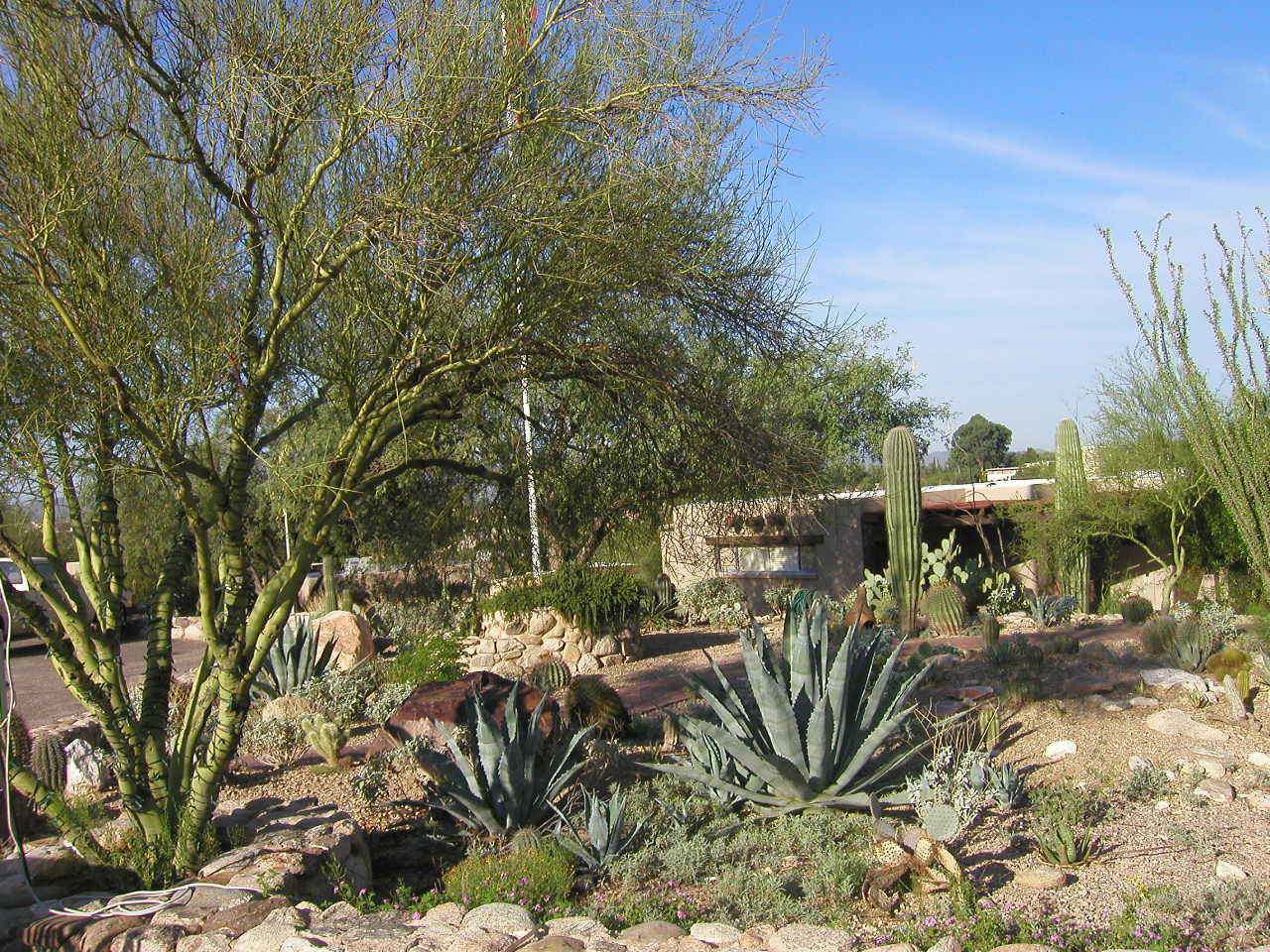Did you know that up to 70 percent of water is used outdoors? Hard to believe, but it’s true. That’s why focusing on your landscape is one of the best and easiest ways to save water and reduce your water bill. In the southwest, as the searing temps of summer start to subside, fall is a particularly good time to get started. With these five helpful water-saving tips for fall, you’ll be maximizing your outdoor water savings in no time.
1. Forgo Overseeding with Winter Rye Grass
From September through November, you’ll hear the whirring of the lawn mowers and find the air filled with dust clouds from lawns being scalped in preparation for annual winter overseeding. But what if we told you that you can forgo that winter lawn? If you are looking for ways to reduce your water use, then not overseeding is a giant step in the right direction. It takes water, and a lot of it—as much as 8,000 gallons for every 1,000 square feet of grass. Here are 10 great reasons to skip that winter lawn.

2. Turn Back Your Timer
As the weather changes and the temperatures drop, the water needs of your plants also change. That’s why it’s important to adjust your irrigation controller for the season. Just as we increase the watering frequency in the summer when the temperatures ramp up, we can scale back for the fall. Not sure how to adjust your timer? Use this step-by-step process or watch this easy-to-follow video. Are you wondering how much and how often to water? Use our interactive, online Landscape Watering by the Numbers guide for determining watering schedules for your plants and lawn. Hopefully you already have, or plan to purchase, a smart irrigation controller that will use weather data and site conditions to adjust the watering for you.
3. Perform Irrigation Maintenance & Repair
Hopefully you’re able to perform general irrigation inspections around your landscape monthly, but fall is a great time for a more detailed inspection and to perform any required maintenance and repairs. According to the EPA’s WaterSense program, household leaks can waste more than 1 trillion gallons annually nationwide. That’s equal to the annual household water use of more than 11 million homes. While many of those leaks are indoors — toilets flappers, dripping faucets, and other leaking valves — an irrigation system that has a leak 1/32nd of an inch in diameter (about the thickness of a dime) can waste about 6,300 gallons of water per month. So fixing even a small outdoor leak can save a lot of water. Besides irrigation system leaks, you should also check the pool, drip emitters, outdoor faucets and pipes, and sprinkler heads. For even more help, use our Smart Home Water Guide for step-by-step instructions on checking your irrigation system for leaks.

4. Replace High-Water-Use Plants with Water Thrifty Ones
Fall is the best time for planting, whether starting from scratch or simply replacing the plants that succumbed to the intense heat of summer. Why is fall the best time to plant? There are several reasons. Soil temperatures are still warm and encourage root growth and development. This allows plants to get established before the heat of the next summer sets in. Also, cooler temps are easier on plants and lessen the demand for water.
- Choose Low-Water-Use Plants: If it’s just plants you need to replace, you’ll find that there are so many beautiful and diverse low-water-use choices, and the hardest part will be narrowing down what you want. A great place to start is our Plant of the Month But, be sure to also check out Landscape Plants for the Arizona Desert. This online book offers hundreds of choices, including vines, trees, perennials, and succulents, as well as 30+ suggested plant combinations. Visiting one of the many Xeriscape demonstration gardens in the area is another way to see and identify plants you like. Snap a photo and take it your local nursery.
- Install Xeriscape Landscaping: If you’re installing a new landscape, there’s no better advice we can provide then to suggest you follow the principles of Xeriscape design. It’s landscape design with water in mind, using common sense practices like good planning and design, selecting low-water-use plants, efficient irrigation, mulching, and more. Also find one of our most valuable resources, our Drab to Fab video series, which documents the steps you’ll need to take, from creating a plan – to planting – to caring for your new landscape. You might also want to check out Landscaping with Style in the Arizona Desert, which takes you step-by-step through the process, complete with a gallery of landscapes ideas.
- Convert from Grass to Xeriscape: Typically, the highest water using plant in most landscapes is that mass of green grass … your lawn! Consider converting your existing grass areas (or at least a large portion of them) to a Xeriscape landscape for a beautiful, low-maintenance, low-water-use desert oasis. Find more information in our Take Out Your Grass Check with your water provider as many will offer a rebate or incentive to do so.

5. Consider Rainwater Harvesting
If you’re making landscape renovations, don’t forget to consider thoughtful grading to channel rainwater to your plants. It might not seem like you’d be able to collect that much water from a rainstorm, but the rooftop of a typical home can net more than 400 gallons of water from just a ½” of rain. That’s 400 gallons of free, nutrient-rich water that can be used to water your landscape. And it doesn’t have to be complicated. Rainwater harvesting can be as simple as adding basins around your plants, building berms to direct the water where you want it to go, or adding a rain barrel. There are many benefits to using rainwater. It keeps the water on your property and reduces the amount of fertilizers and pesticides that flow into the storm drains; it reduces your outdoor watering needs; it nourishes your plants; and best of all, it saves you money on your water bill.

There is no doubt that saving water outdoors can take some work. But the results will be a beautiful landscape that saves water and money. For some easy ways to conserve water indoors and out, check out our 100+ water-saving tips.

